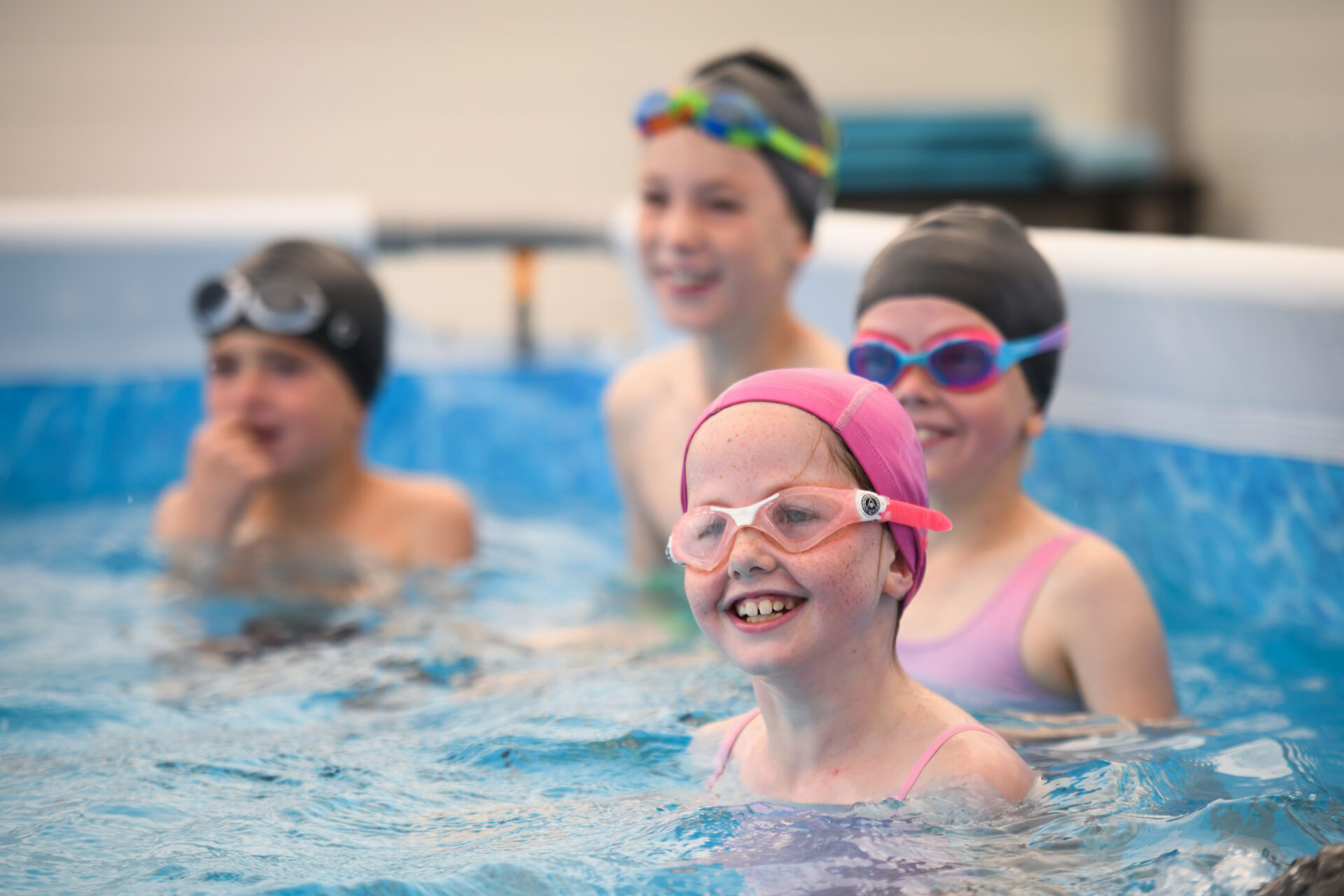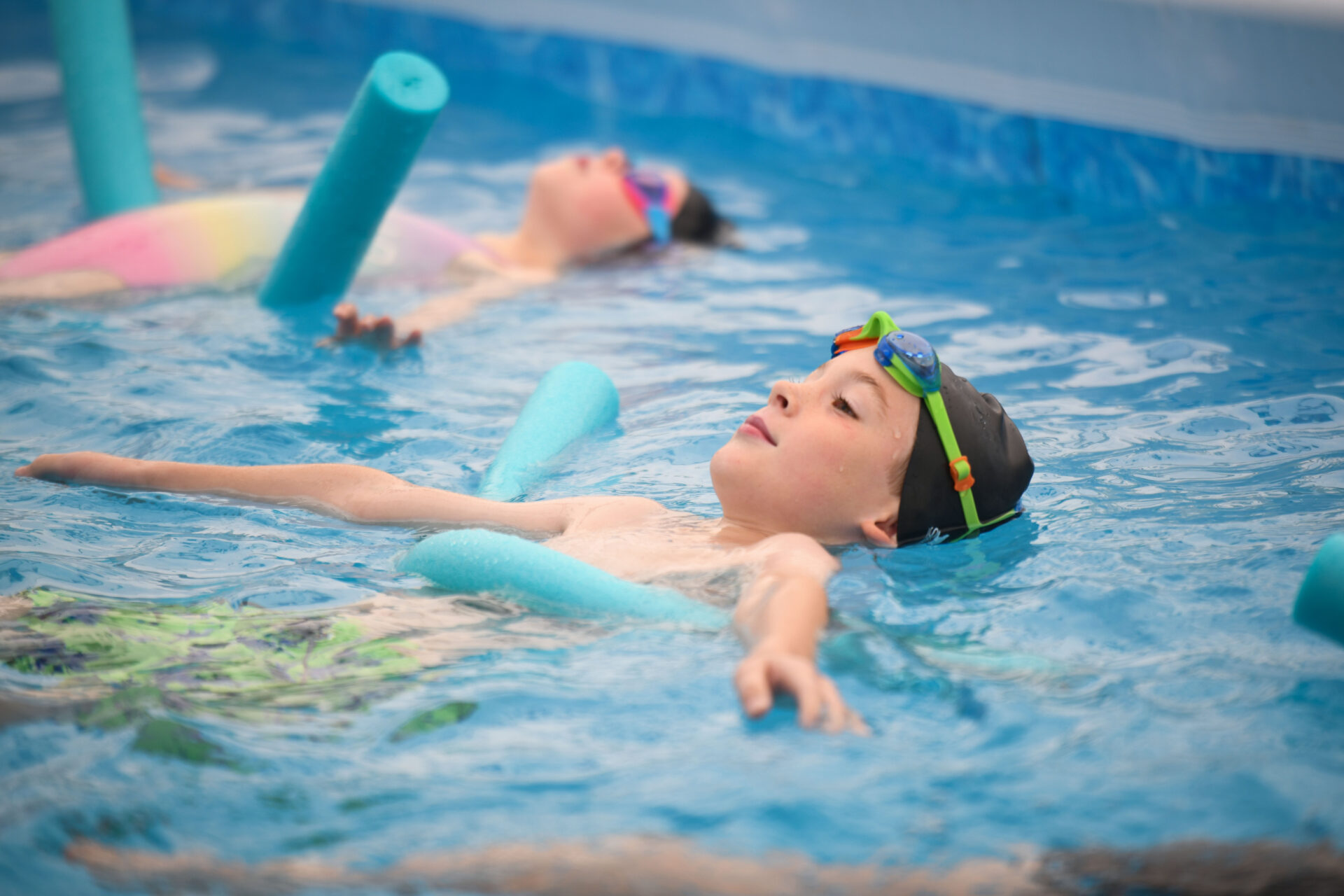How Pop-Up Pools Are Transforming Swimming Education in 2025
Across the East Midlands and the rest of the UK, swimming and school water safety education is facing its biggest challenge in decades. More children are leaving primary school without the confidence to swim 25 metres or perform basic self-rescue skills that the national curriculum considers essential. But while the situation feels increasingly urgent, a powerful solution is emerging in schools across the country: on-site pop-up pools.
Swim:ED’s Making Waves, Changing Futures: 2025 Impact Report shows just how powerful this approach is, including a 157% increase over the past 12 months in pupils achieving the key 25-metre benchmark, alongside major gains in stroke ability, self-rescue, and water-safety knowledge.

A Worsening Water Safety Crisis
The UK continues to see a worrying decline in children’s swimming ability. In 2024, 30% of Year 6 pupils were unable to confidently swim 25 metres, a rise from the previous year. By 2026, more than 1.2 million children are expected to fall short of national curriculum expectations, which include:
- Swimming at least 25 metres
- Using multiple strokes effectively (front crawl, backstroke and breaststroke)
- Performing safe self-rescue in different situations
Pressure on schools has intensified due to instructor shortages, rising pool operating costs, and widespread leisure centre closures. In fact, 35% of primary schools delivered fewer than 10 swimming sessions per pupil in 2022/23 — not even half a term of weekly lessons.
For schools in places like Northamptonshire, Leicestershire and Peterborough, the impact is felt in longer waiting lists, expensive and time-consuming travel to off-site pools, and less actual water time per child.
Meanwhile, drowning incidents among children have doubled in just four years, highlighting the real-world consequences of diminishing access.
Bringing the Pool to the Playground
Swim:ED’s model flips the problem on its head: instead of moving children to distant pools or being part of a waiting list, the pool moves to the school. The benefits are immediate and practical:
- No travel time – pupils swim during the school day, meaning lessons are disruption-free.
- High intensity learning – concentrated blocks of sessions maximise water time and skill practice.
- Cost efficiencies – removing transport and venue hire reduces costs for schools and families.
- Flexible timetabling – schools can integrate lessons into the curriculum and target priority groups.
Swim:ED packages include a heated, temporary pool in a secure modular structure, optional changing rooms, fully qualified teachers and lifeguards, and a data portal to track pupil progress. That all-in model strips out the administrative and staffing headaches that often prevent schools from delivering regular lessons.
A New Standard for School Swimming
Swim:ED’s approach offers intensive, small-group sessions over 5–7 uninterrupted weeks. Pupils receive fifteen 45-minute lessons, in groups of 12 classmates. Compared to the typical ten 25-minute off-site sessions.
The result? Significantly more progress in less time and the data proves it.
Across 15,382 pupils measured in the 2024/25 academic year:
- 157% increase in Year 6 pupils swimming 25 metres unaided
- 119% rise in children confidently using multiple strokes
- 337% improvement in safe self-rescue skills
- 503% surge in water safety knowledge
With travel barriers removed, learning becomes focused, uninterrupted, and meaningful, creating faster improvements and lasting confidence.

Voices From Schools and Industry Leaders
Tara Dillon, CEO of CIMSPA, highlights the national importance of this impact:
“It’s fantastic to see the impact of the work that Swim:ED are delivering to improve primary school-age swimming proficiency and water safety education.
Over recent years, our members and partners that work in and operate leisure facilities with pools have told us about the challenges that they face to remain operational. So it’s great to see such clear, positive outcomes, that are supported by workforce and participant-led data.
Job creation and career development is key, as the sector grows to support the health and wellbeing of our communities, and in this case, to directly save lives.”
Other teachers and leaders across participating schools agree:
“I am thrilled to have found the Swim:ED programme. We have had an exceptional half-term of swimming and water safety lessons for our pupils. The entire experience has been outstanding, and we couldn’t be more pleased with the quality of instruction and service provided. A special mention goes to Coach Rachel, whose flexibility, professionalism, and dedication have made a noticeable impact on our pupils. Her encouragement fostered confidence and skill-building, and the growth we witnessed is a testament to her commitment.” — Rachel Rodipe, Charville Academy
“Swim:ED created a noticeable shift in school dynamics. Children showed kindness, encouraged one another, and became more confident, both personally and in their swimming. Parents were impressed that the school had a pool on site, and younger pupils were excited for their turn in the future. Pupils became more independent – remembering their kit, changing quickly, and returning to class ready to learn.” — Eve Chappell, Chilwell Croft Academy
“It has been a fantastic opportunity for our pupils to develop their confidence in the water, improve their swimming skills, and enjoy a unique experience right on our doorstep… and it’s been a joy to provide this life‑saving skill to so many of our children.” — Percy Shurmer Primary Academy
When schools install on-site pools, the impact goes far beyond swimming ability — it boosts confidence, behaviour, wellbeing, and community pride.
Download the Full 2025 Impact Report
The Making Waves, Changing Futures: 2025 Impact Report offers schools clear guidance on:
Proven strategies to overcome staffing and planning barriers
Detailed benchmarks from 2024/25 Year 6 cohorts
Cost-effective solutions to improve swim provision
Case studies from real East Midlands and UK primary schools
Full insights into Swim:ED facilities, technology, teaching teams, and curriculums
Join the 2025 Discovery Webinar
Schools interested in exploring how the pop-up pool model could work for them can join Swim:ED’s next online session:
Thursday 27 November, 4pm
A friendly, informative walkthrough of the programme, packed with practical insights.
Reserve your place

